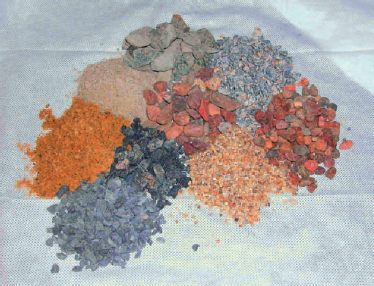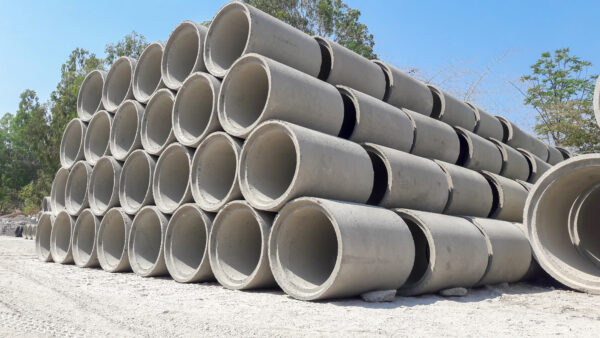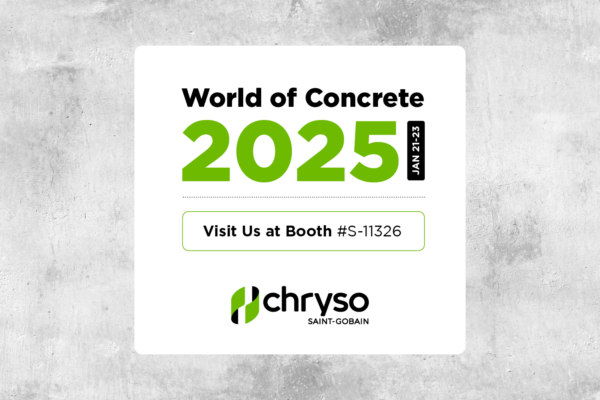Materials for Self-Consolidating Concrete (SCC) – TB-1502

Powder Materials Hydraulic Cements
Conforming to ASTM C150, C595, C845, or C1157, cement from one cement source may provide excellent SCC while changing to another source provides dramatically different results. Testing prior to production is required. In applications where visual appearance is critical, cement of the same source, brand, and color, manufactured at the same mill should be used throughout the project.
- Supplementary Cementitious Materials
Pozzolanic or latent hydraulic powders, conforming to ASTM C618, C989, or C1240, can provide additional workability, increased strength, and reduced permeability and efflorescence.
Inert powder
Limestone, dolomite, or granite dust finer than 0.150 mm (No. 100) sieve. Not as widely used in North America as in other areas, but necessary in some instances where high-powder content is required, and the heat of hydration and shrinkage resulting from use of all reactive powder materials cannot be tolerated.
Admixtures
- The development of polycarboxylate-based admixtures such as the ADVA® family of products was the key enabling factor in the production of quality SCC.
- ADVA® 405 and ADVA® 455 for Ready Mix and ADVA® Cast 575, ADVA® Cast 585, ADVA® Cast 555 and ADVA® Cast 600 for Precast were designed specifically for the production of SCC
- V-MAR® 3 is a viscosity-modifying agent (VMA) for use in mixes that require additional viscosity to achieve needed passing ability, stability, or reduced moisture sensitivity.
- Generally, naphthalene- and melamine-based products such as DARACEM® 19 and DARACEM® 100 are not used in SCC mixes, but there are instances of successful use. Such mixes are more likely to need V-MAR® 3 to achieve the needed stability.
- Other admixtures successfully used in SCC mixes include air entrainers, water reducers, retarders, accelerators, and specialty admixtures such as corrosion inhibitors. The use of each of these materials depends upon the specific application, and pre-testing is required. When air-entraining admixtures are used, quality of air system must be confirmed, as mixes with lower stability may experience loss of air due to low paste viscosity.
Coarse Aggregates
- Aggregates should meet the requirements of ASTM C33 with the exception of grading requirements. The combined gradation of aggregates is more important than individual gradations.
- The maximum size of coarse aggregates depends on the particular application and is usually limited to 20 mm (3⁄4 in.). It should not be larger than 1⁄2 (preferred) to 2⁄3 the spacing of the narrowest gaps between reinforcing bars (as compared to ACI 211.1 section 6.3.2 which allows a maximum size 3⁄4 the spacing for conventional concrete intended to be vibrated). Mixes with higher maximum size relative to the gap will be more sensitive to blocking, and will likely need either higher powder content or a VMA to increase viscosity.
- Coarse aggregates (and blends) having the lowest possible water demand will provide the best SCC. When water demand is high, the water content in the paste is greater, requiring more powder to keep the water-to-powder ratio low enough to avoid stability problems. Thus the more rounded the aggregate the easier it will be to make quality SCC. A useful index of this is the Void Content of the coarse aggregate by ASTM C29/29M. The lower the void content, the less mortar is needed to fill the voids.
- Coarse aggregates with high-aspect ratios should be avoided if possible. Well-rounded aggregates allow better packing (at equal gradation), and lower mortar and lower powder content will be required. Care should be taken that crushed aggregate is as blocky in shape as possible. This is not to say that more angular aggregates cannot make good SCC, only that it will take more powder, more VMA, or both to do so.
Fine Aggregates
- Fine aggregates should meet the requirements of ASTM C33 with the exception of grading requirements. Variations in fine aggregate quality will have a major effect on the overall quality of SCC.
- Again, water demand is of paramount importance. All things being equal, the less water needed to achieve a target slump flow, the better the SCC is likely to be.
- Fine aggregate moisture control must be provided for. It is a critical factor in controlling SCC.
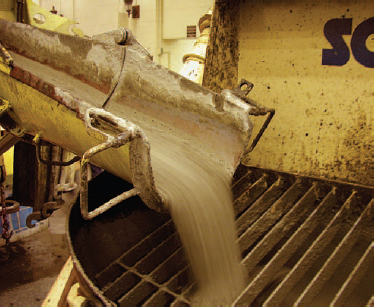
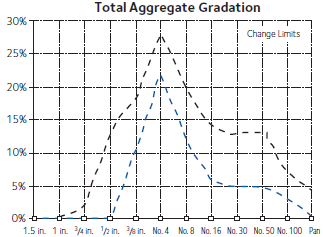
Gradation Requirements
- Most SCC mixes require special attention to the total gradation of the combined aggregates, in order to lower water demand through better packing. The accompanying graph provides good upper and lower limits for a blended gradation for SCC.
- Workability and Coarseness (Harshness) Factors are calculated parameters, that can provide useful insight into potential mix performance.
- Workability Factor: Percent passing 2.36 mm (No. 8) sieve.
- Coarseness (Harshness) Factor: Percent plus 2.36 mm (No.8) retained on 9.5 mm (3⁄8 in.) sieve.


